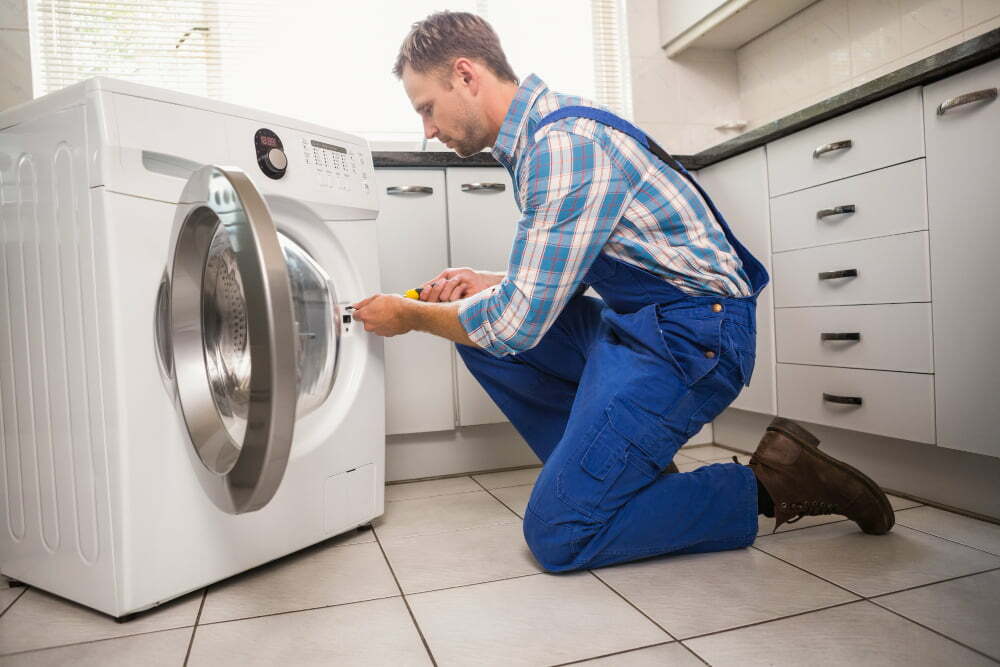How often should Homeowners clean appliances?
Proper appliance hygiene is essential for keeping your home or office running smoothly. Cleaning and sanitizing appliances regularly can enhance performance and helps avoid appliance repair, improve sanitation levels, and prevent potential breakdowns.
What is the best way to clean your appliances?
Join us as we break down when and how often you should clean yours!
Clean Your Dishwasher
To begin with, the frequency at which appliances are cleaned depends on their usage. For example, dishwashers should be cleaned at least once a month to prevent the buildup of sediments and food particles, which may cause clogs and unnecessary appliance repair.
•Start by removing any food scraps from the dishwasher filter.
•Then, run the dishwasher on a hot cycle with a cup of vinegar on the top rack.
•The vinegar will help to remove any buildup and eliminate any odors.
•Once complete, wipe down the dishwasher's interior with a clean cloth.

Clean your Dryer
Similarly, dryers should be cleaned at least twice a year, or more often if used frequently, to prevent the accumulation of lint and dust that could cause fires.
•Remove the lint screen and clean it with warm, soapy water. •Use a vacuum cleaner to clean around the lint screen area.
•Then, use a flexible dryer vent brush to clean the vent hose.
•Finally, vacuum out the exhaust vent outside the house.

Clean your microwave
Microwaves should be cleaned at least once a week, or more often depending on their usage, to prevent food and grease stains accumulation.
•Start by removing the oven grates and soaking them in warm, soapy water.
•Then, using a suitable oven cleaner, spray the oven inside and let it sit for the recommended time.
•Wipe the oven with a damp cloth once the time is up.
•Remember to clean around the oven door and the oven knobs as well.
•Finally, replace the grates, and you're done!
Clean your washing machine
On the other hand, washing machines should be cleaned after every load. It is to prevent the growth of bacteria and mold, which may accumulate in the machine's damp and dark areas, cause unpleasant odors in clothes, and eventually require appliance repair service.
To clean your washing machine:
•Clean the detergent dispenser and the drum with warm water and vinegar.
•Run the washing machine on a hot cycle with a cup of baking soda. It will help to remove any buildup and eliminate any odors.
•Once the cycle is complete, wipe down the washing machine's interior with a clean cloth.
Clean your Commercial Fridge
Commercial refrigerators, often used in restaurants and food establishments, require more frequent cleaning, at least once a week, as they store perishable items and are susceptible to bacteria buildup.
•Start by removing all the food and drinks from the fridge.
•Throw away any expired or spoiled items.
•Wipe down all the shelves, racks, and drawers using warm water and mild soap.
•Remember to clean the door seals, which can harbor bacteria.
•Once you've cleaned everything, dry it off with a clean cloth and put everything back where it belongs.
It is essential to note that proper cleaning of household appliances not only ensures optimal functioning but also promotes a healthy and hygienic living environment.
Who Are We?
Trusted Home Improvement Service in British Columbia
At Speedy Appliance Repair, we offer practical, real-life tips and inspiration to help you make your best home. From troubleshooting common issues of appliance advice to a simple guide to fridge repair and replacement, our experienced team can show you.
We have been in business for a long while and have serviced thousands of customers.
We also offer a money-back satisfaction guarantee so you can be sure you will be happy with
our service.
In case you need any assistance with your appliance repair costs, Let our technician help you.
Call at (604) 446-9526.


